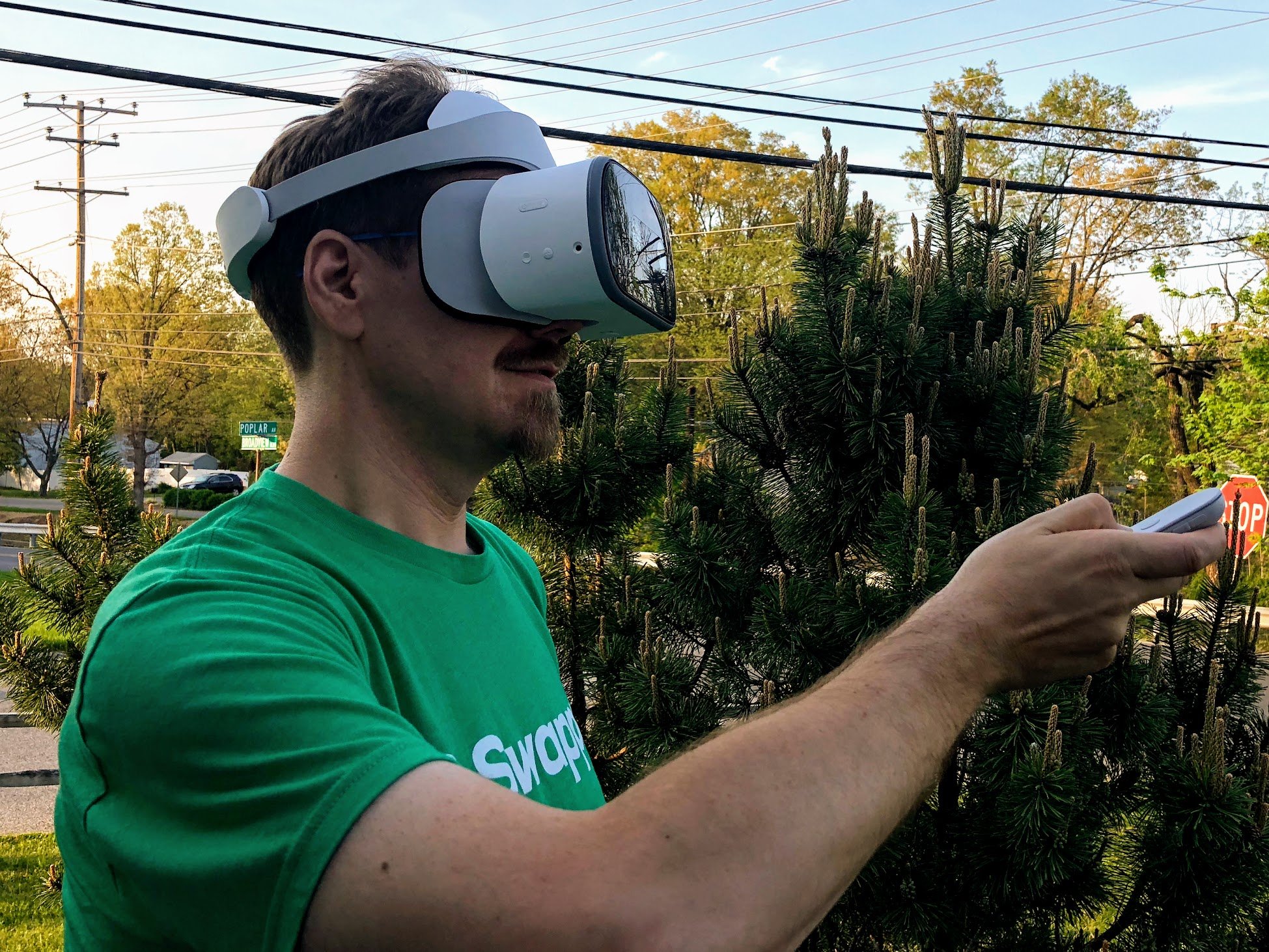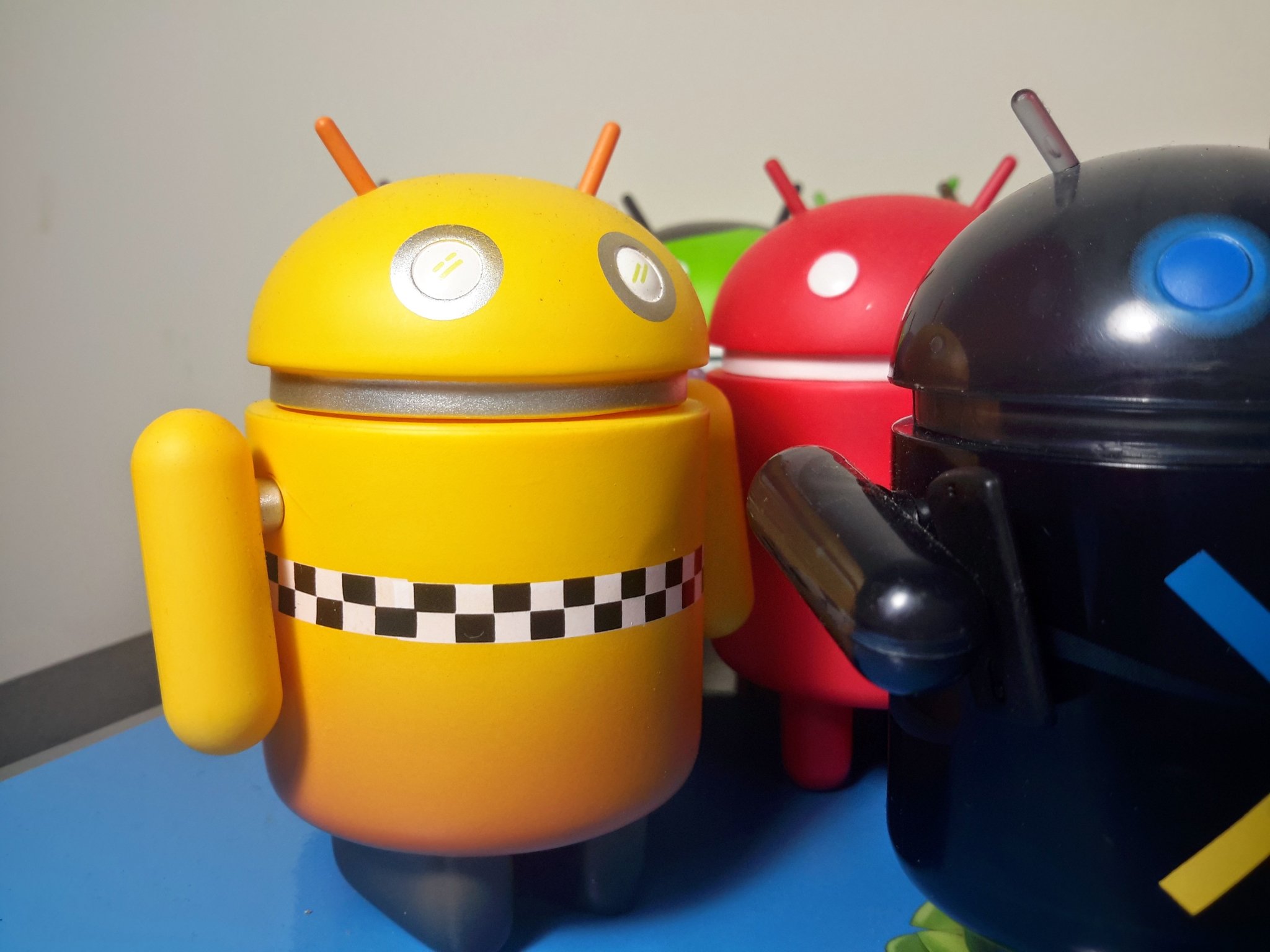Everything bad about current generation VR is about to disappear under a flood of pixels.
In late May, LG and Google showed off a tiny piece of glass that's going to change VR and AR forever. It was a 4.3-inch 3840 x 4800 (18-megapixel) OLED display with a 120 x 96 field of view. A quick check of the math says that means it has 1,443 pixels-per-inch, which makes it the highest resolution display ever. Oh — it also has a 120Hz refresh rate.
If you have an Oculus Rift or HTC Vive you might understand why this is amazing. If you don't, you need to understand that VR headsets work by projecting images on two small displays positioned very close to your eyeballs. That gives a sense of immersion, which is kind of important if you want to make virtual reality feel like real reality. It also means that everything can look like a screen door because the pixels are so close to your eyes, you can feel claustrophobic because the field of view is too narrow. Even a 60 or 90Hz refresh rate can leave you feeling a bit seasick under the right (or wrong) conditions.
VR needs a very good and very stable display. More is better here.
You also need to know that Google Daydream and Samsung's Gear VR are very cool but smartphone-powered VR isn't nearly as "powerful" as a headset that uses a PC engine and GPU, and can amplify every one of these problems. VR is new technology, and the issues that surround every new tech are there to be solved. One way to work them out is with a kicking display in front of your eyes that aims to reach the limits of human vision.
![]() Some things look better behind the screen door.
Some things look better behind the screen door.
We're told by some very smart science people that the bounds of human vision is 9,600 x 9,000 pixels at 2,180 ppi, with a 160 x 150 field of view. That means this display is closer than ever to showing everything our eyes are mechanically capable of seeing. Compare this to something like the HTC Vive Pro and its 1440 x 1600 (625 ppi) display at 90Hz. The Vive Pro is a great VR headset and using it can feel immersive with the right content — it really can be Virtual Reality. This panel from LG is far better.
So this new screen is built for VR and will be a conduit to improve the tech. That's expected as smart people work on those problems. But I don't think anyone expected Google to be the company who wanted it built. Google can do VR pretty well, both in the smaller affordable space with Daydream and with stand-alone VR Headsets like the one we've already seen from Lenovo. But I don't think this display was designed for any product Google currently "makes".
 This is how VR will sell — no wires, no backpacks. Google just has to make it amazing.
This is how VR will sell — no wires, no backpacks. Google just has to make it amazing.
This new display has to go inside a standalone unit that doesn't make you look like a Ghostbuster when you wear it or nobody will buy it.
You need plenty of oomph to push these many pixels at 120Hz, and a small self-enclosed headset with a mobile chip isn't going to be able to do it. There is no way around that simple fact, and we already know that the panel can't run past 90Hz on any existing mobile chipset. It's not a matter of raw horsepower; small mobile chips are heat constrained. They can run fast and hard, but then get hot and need to take a rest. This panel isn't going in something like the Lenovo Mirage Solo because it needs a CPU and GPU running fast enough to drive it without hitting that thermal wall.
I think Google is going to try and reinvent stand-alone VR again. Google loves to tinker with existing products and Daydream Standalone is a shiny new platform that hasn't been sullied by dirty hands yet — it has to be tempting to try "stuff". If there is a way to match portability with GPU rendering power, they will find it.
Whether we buy it or not is the real question.


0 Response to "You Can See More: The Very Real reason LG built Google the sharpest OLED display ever"
Post a Comment